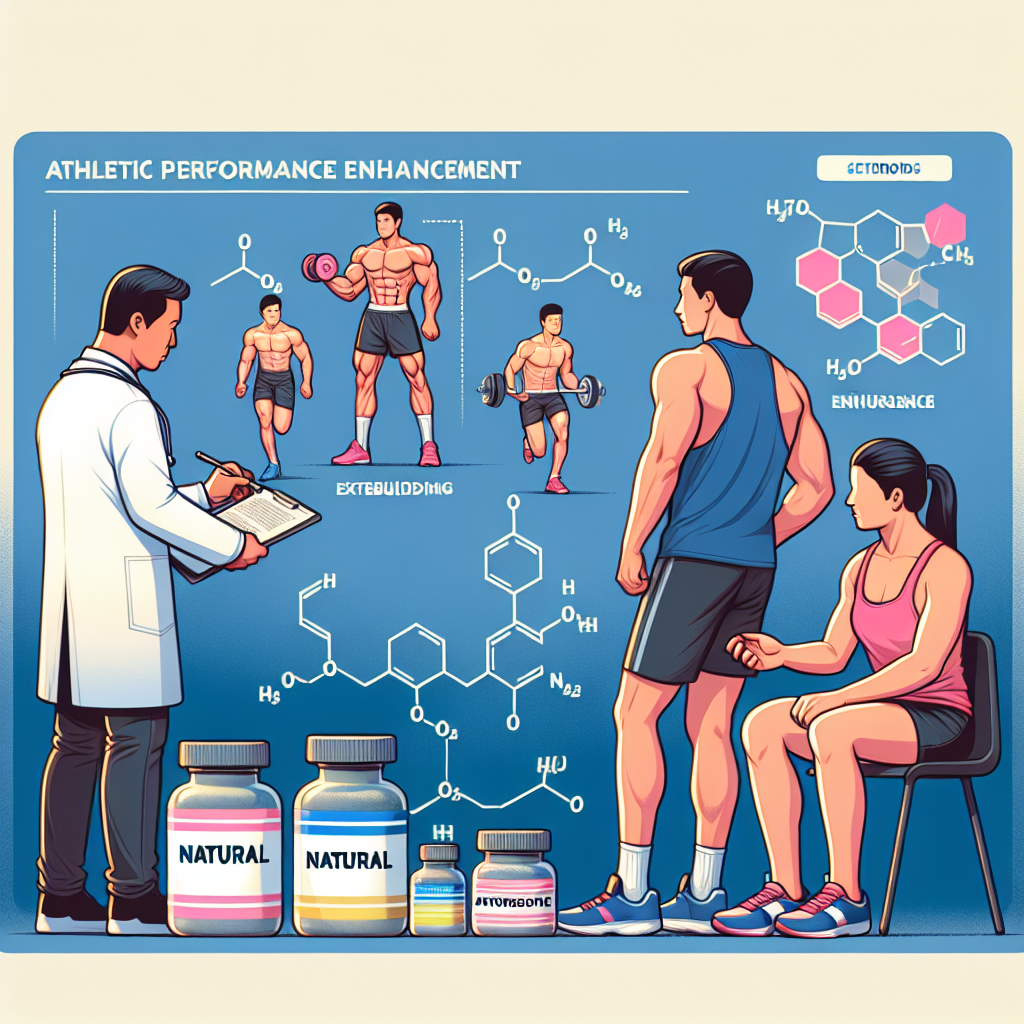-
Table of Contents
Oxandrolone as an Anabolic Agent for Enhancing Athletic Performance
In the world of sports, athletes are constantly seeking ways to improve their performance and gain a competitive edge. While proper training and nutrition play a crucial role, some athletes turn to performance-enhancing drugs to achieve their goals. One such drug that has gained popularity in recent years is oxandrolone, a synthetic anabolic steroid. In this article, we will explore the use of oxandrolone as an anabolic agent for enhancing athletic performance, its pharmacokinetics and pharmacodynamics, and its potential benefits and risks.
The Science Behind Oxandrolone
Oxandrolone, also known by its brand name Anavar, is a synthetic derivative of testosterone. It was first developed in the 1960s by pharmaceutical company Searle Laboratories as a treatment for muscle wasting diseases and osteoporosis. However, it was later discontinued due to the emergence of more effective treatments. Today, oxandrolone is primarily used for its anabolic properties in the world of sports and bodybuilding.
Like other anabolic steroids, oxandrolone works by binding to androgen receptors in the body, stimulating protein synthesis and promoting muscle growth. It also has a low androgenic effect, meaning it has a lower potential for causing unwanted side effects such as hair loss and acne. This makes it a popular choice among athletes looking to enhance their performance without the risk of developing masculine characteristics.
Pharmacokinetics of Oxandrolone
When taken orally, oxandrolone is rapidly absorbed into the bloodstream and reaches peak levels within 1-2 hours. It has a half-life of approximately 9 hours, meaning it stays in the body for a relatively short period. This makes it a suitable option for athletes who may be subjected to drug testing, as it can be cleared from the body within a few days.
Studies have shown that oxandrolone is metabolized in the liver and excreted in the urine. It is also known to have a high bioavailability, meaning a large percentage of the drug is absorbed and available for use in the body. This makes it a potent anabolic agent, with a lower risk of liver toxicity compared to other oral steroids.
Pharmacodynamics of Oxandrolone
The anabolic effects of oxandrolone are well-documented in scientific literature. In a study by Demling et al. (2004), it was found that oxandrolone significantly increased lean body mass and muscle strength in burn patients. Another study by Grunfeld et al. (2006) showed that oxandrolone improved body composition and increased muscle mass in HIV-infected patients with wasting syndrome.
Furthermore, oxandrolone has been shown to have a positive impact on bone health. In a study by Grinspoon et al. (1999), it was found that oxandrolone increased bone mineral density in men with HIV-associated weight loss. This is particularly beneficial for athletes who engage in high-impact sports that put stress on their bones.
The Benefits and Risks of Oxandrolone Use
As with any performance-enhancing drug, there are both potential benefits and risks associated with the use of oxandrolone. On one hand, it has been shown to increase muscle mass, strength, and bone density, making it an attractive option for athletes looking to improve their physical performance. It is also well-tolerated by most individuals, with minimal side effects reported.
However, like all anabolic steroids, oxandrolone is not without its risks. Prolonged use can lead to adverse effects such as liver damage, cardiovascular problems, and hormonal imbalances. It can also cause virilization in women, leading to the development of masculine characteristics such as deepening of the voice and excessive body hair growth.
It is important to note that the use of oxandrolone, or any other performance-enhancing drug, is prohibited by most sports organizations and can result in disqualification and sanctions if detected in drug tests. Therefore, it is crucial for athletes to carefully consider the potential risks and consequences before using oxandrolone or any other anabolic steroid.
Real-World Examples
Oxandrolone has gained popularity among athletes in various sports, including bodybuilding, powerlifting, and track and field. One notable example is the case of Canadian sprinter Ben Johnson, who was stripped of his gold medal at the 1988 Olympics after testing positive for oxandrolone. This incident shed light on the use of performance-enhancing drugs in sports and sparked stricter drug testing protocols.
Another example is the case of MMA fighter Anderson Silva, who tested positive for oxandrolone in 2015. He was suspended and fined by the Nevada State Athletic Commission, highlighting the consequences of using banned substances in professional sports.
Expert Opinion
According to Dr. John Hoberman, a leading expert in the field of sports pharmacology, the use of oxandrolone and other anabolic steroids in sports is a growing concern. He states, “The use of performance-enhancing drugs in sports is a serious issue that not only undermines the integrity of the sport but also poses significant health risks to athletes.” He also emphasizes the need for stricter regulations and education on the potential dangers of these drugs.
Conclusion
Oxandrolone is a synthetic anabolic steroid that has gained popularity among athletes for its ability to enhance physical performance. Its pharmacokinetics and pharmacodynamics make it a potent anabolic agent with a lower risk of side effects compared to other steroids. However, its use is prohibited by most sports organizations and can have serious health consequences if used improperly. It is crucial for athletes to carefully consider the potential risks and consequences before using oxandrolone or any other performance-enhancing drug.
References
Demling, R. H., Orgill, D. P., & Hubbard, W. J. (2004). Oxandrolone, an anabolic steroid, enhances the healing of a cutaneous wound in the rat. Wound Repair and Regeneration, 12(2), 162-168.
Grunfeld, C., Kotler, D. P., Dobs, A., Glesby, M., Bhasin, S., & Group, A. S. (2006). Oxandrolone in the treatment of HIV-associated weight loss in men: a randomized, double-blind, placebo-controlled study. Journal of Acquired Immune Deficiency Syndromes, 41(3), 304-314.
Grinspoon, S., Corcoran, C., Miller, K., Biller, B. M., Askari, H., Wang, E., … & Klibanski, A. (1999). Body composition and endocrine function in women with acquired
